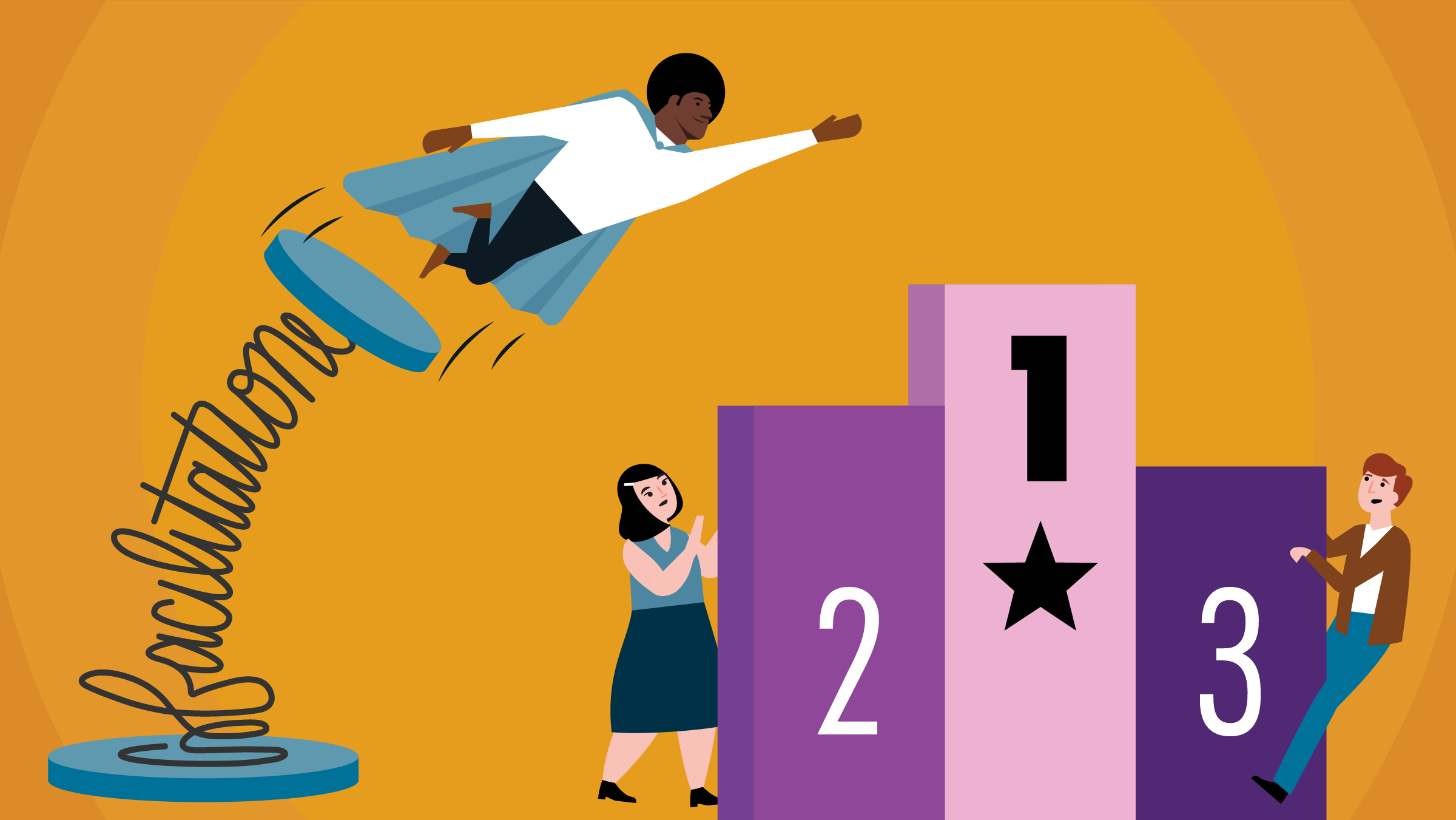From enhancing collaboration to amping up productivity, skilled facilitation can make all the difference in how effectively your organization works together—even in today’s hybrid workplace.
If your company is like ours, you’ve significantly transformed your work culture in the past three years. It was necessary, since staying alive through the pandemic meant reinventing how you work.
The biggest transformation in the global economy, of course, was the forced move to remote work. And as we’ve all begun to see firsthand, many employees who have been asked to return to the office now are resisting. It turns out the flexibility, freedom, and extra time that remote work surprisingly afforded them are qualities they want to keep.
According to Gallup, 59% of the U.S. workforce prefers a model where at least 10% (and up to 100%) of their work time is remote.1
To their credit and despite some well-publicized missteps, employers are listening. As organizations continue to shift from fully remote work, many are creating hybrid work policies that call for a mix of on-site and remote work.
In fact, because remote work generates productivity gains and employees prefer to work remotely some of the time, the number of companies creating hybrid work policies is expected to nearly double—from 42% in 2021 to 81% in 2024.2
Three Benefits of Facilitation for Hybrid Teams
As the ways we work continue to evolve, pressure will increase regarding how well teams work together from different locations. Virtually every organization you compete with is facing the same challenge.
The key to staying ahead and maintaining the connection your teams need to remain effective is facilitation—the ability to engage people in creating, discovering, and applying learning insights that help them solve problems and move forward together.3
Here are three ways facilitation can become a differentiator for you and your teams this year.
Reason 1: Facilitation amps up remote collaboration
One of the benefits of skilled facilitation has always been more effective collaboration. That became even more evident during the pandemic, when remote meetings became the norm and meeting leaders had to learn quickly how to move objectives forward over Zoom.
The rise of hybrid culture introduces a new wrinkle: Teams now must make progress while they’re working together in a mash-up of conference rooms and video conferences. Active facilitation can help these teams advance their work by giving structure to work sessions that make collaboration actionable and effective. Targeted exercises, virtual whiteboards, and other tools help teams get further faster, regardless of where they are.
And when it’s done effectively, facilitation can help keep hybrid workers engaged. Since 2020, the number of remote workers who consider themselves disengaged has risen substantially.4 A facilitator can skillfully connect and co-create with participants, helping them see themselves as part of the team and part of the solution.
Reason 2: Facilitation keeps your teams focused
It can be tough to keep participants focused even when they’re in the same room together; keeping remote or hybrid teams on point is even more difficult.
Facilitation done well controls the pace of teamwork, so participants don’t feel bogged down with inaction or left behind by a crammed agenda the meeting leader races through.
A skilled facilitator gauges the energy level and contribution of everyone involved, whether they’re in the room or on-screen. The facilitator moderates the speed of work to make sure everyone is following and working together and redirects attention to the task at hand if someone goes off on a tangent.
By paying attention to how the team is working and what support they need, the facilitator is removing obstacles that endanger teamwork and providing direction, energy, and encouragement to maintain focus.
Reason 3: Facilitation saves time
The single biggest reason we hear that people dislike or distrust meetings is because “nothing gets done.”
Maybe there’s a lot of aimless talk about the problem you’re supposed to be working to solve, or perhaps one person dominates the conversation to the point it sounds like a monologue. Or, worse still, everyone shows up but no one knows what the meeting’s about. You’re probably familiar with such situations, which can seem like exercises in wasting time.
Good facilitation saves that time and puts it to use. A thoughtful, collaborative facilitation plan turns a boring meeting into a productive work session. The direction and structure a facilitator provides bring all the benefits we’ve talked about so far and enable teams to make progress and reach critical decisions faster.
The Power of Facilitation
As we move further into 2023, more organizations will try to figure out how to evolve their work together. For this to happen, everyone—whether in the office or working remotely—will need to collaborate better, stay more focused, and use their time together more effectively.
Improving your facilitation skills is the one thing that’s sure to make progress on all three.
1 Ben Wigert. Gallup Workplace. “The Future of Hybrid Work: 5 Key Questions Answered With Data.” March 15, 2022. The Future of Hybrid Work: 5 Key Questions Answered With Data (gallup.com)
2 Kennedy Pereira. “Is Corporate America Ready for the Future of Work?” AT&T Business. February 25, 2022. The Future of Work in All Industries is a Hybrid Workforce (att.com)
3 Association for Talent Development. “What Is Facilitation?” What is Facilitation? | ATD
4 Andrea Hsu. “America, we have a problem. People aren’t feeling engaged with their work.” NPR Business. January 25, 2023. Less than a third of U.S. workers feel engaged at work, Gallup finds : NPR
Additional Resources
We invite you to peruse the following resources that explore ways to make your meetings efficient and effective.
Some tools to help you on your facilitation journey:
Blog posts that explore the art of facilitation:
